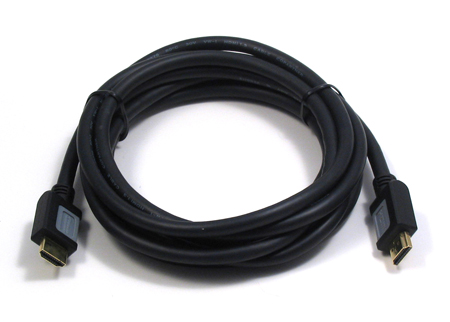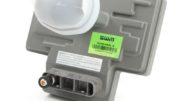There was a time when it seemed easier. DIRECTV receivers, in fact most consumer electronics, came with a friendly device called an “RF modulator” that put their outputs on channel 3, so that any television could use it without special cables. Many a gen-X-er and older millennial remembers connecting their game systems and VCRs this way.
HDMI: The way we do it now

It’s been a while, and for the most part we get the same kind of one-cable functionality from HDMI, but if you’re replacing an old receiver, you may yearn for a more simple solution. The good news is that you do have options, but first let’s explain why DIRECTV receivers stopped including a nice, simple, coaxial output.
The world’s changed since the 20th century.
First of all, an RF modulator as you know it would only work in standard definition. There isn’t any magic to creating a similar part for high definition, but without the cooperation of DIRECTV and its content provider partners, such a thing is never going to be available for regular folks.
High definition modulators exist for businesses and hotels but they cost a lot of money. That’s partially to discourage regular folks from using them. You see, if you could RF-modulate an HD signal you would be one step closer to being able to make perfect digital copies, and that’s precisely what the content providers don’t want you to do. They want that signal safely wrapped with copy protection so that you can’t make zillions of copies and sell them (which, seriously, who would bother?) This remains a huge fear of content providers everywhere and the need for copy protection affects pretty much every piece of consumer video hardware.
HDMI cables handle this sort of copy protection automatically. They’re built for it, and the digital transmission they use makes it work very quickly and very well. Wrapping copy protection around a normal, antenna-style signal would mean adding extra hardware to the TV to decode it. Hotels use TVs like this all the time but they’re really not available to the general public.
Can you do it old-school?
Now, let’s say you are willing to go down to standard definition. Perhaps you’re replacing an old receiver and it’s connected to an equally old TV. The good news is that you can still get an RF modulator and they are not expensive at all. My personal favorite is the Holland 6203-1 Video RF Modulator which does exactly what you want it to. You connect the red/white/yellow connections from your receiver into it and it sends the signal over channel 3. Easy peasy.
If you have a DIRECTV Genie Mini Client, you might have noticed that it doesn’t have those red, yellow, and white connectors. There’s a way to fix that… this handy little cable connects to the client and gives you just what you’re looking for. It works with all Genie clients except the 4K one. Even combining this cable with the RF modulator isn’t a terribly expensive proposition and it’s a lot less than getting a new TV.
Then again… if you’re looking for an excuse to replace that TV… ignore this whole article.





